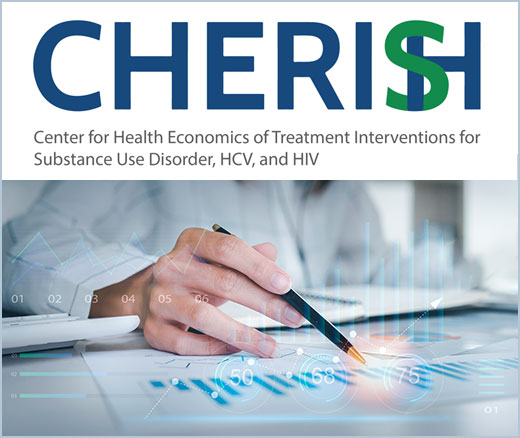
New Model Predicts Stimulant Overdose Risk Among Medicaid Patients
LDI Fellows Used Medicaid Data to Identify Individuals at Highest Risk for Cocaine- and Methamphetamine-Related Overdoses, Paving the Way for Targeted Prevention
Substance Use Disorder
Blog Post

Imagine a medication that reduces morbidity and mortality from a disease that affects more than two million people in the United States. The medication drastically improves quality of life for those who take it and reduces costs to the health care system. For hospitalized patients, this medication decreases the chance of being readmitted and of dying after discharge. This medication can be picked up from a pharmacy and taken at home, and generic versions are available. Why then, is this medication notoriously difficult to access?
Perhaps it is because this medication is buprenorphine, which does not cure cancer or prevent Alzheimer’s disease, but instead makes living with opioid use disorder (OUD)—chronic, often-relapsing disease—feasible. While buprenorphine has been around for nearly two decades, a variety of systemic and societal factors largely rooted in stigma make it inaccessible, especially for people of color and those living in rural areas. While a variety of efforts are needed to address the opioid overdose crisis, one promising strategy is to leverage hospitalization to initiate patients on buprenorphine.
Why consider hospitalization a “reachable moment”? Patients with OUD are often hospitalized for extended periods of time due to discharge challenges (e.g., skilled nursing facilities may not accept patients with substance use disorders) or severe morbidity (e.g., recovering from cardiac surgery for endocarditis). Our team recently conducted a systematic review of hospital-based interventions for patients with OUD. Many interventions used interdisciplinary or multidisciplinary teams that variously included peers with lived experience, social workers, registered nurses, psychiatrists, and internal medicine as well as addiction medicine physicians. As expected, interventions generally focused on linkage to medication for OUD like buprenorphine or methadone during hospitalization and connection to post-discharge OUD care. Results were mixed regarding the impact of existing interventions on outcomes such as improving rates of in-hospital initiation of and post-discharge connection to medication for OUD and decreasing rates of health care utilization and discharge against medical advice. Interventions with the best evidence for improving outcomes facilitated connection to post-discharge OUD care and employed an Addiction Medicine Consult service. The review highlights the need for OUD-related interventions for hospitalized patients with OUD, though existing interventions may need to be adapted or refined to ensure that they are equitably improving meaningful outcomes.
While hospitalization serves as a logical touchpoint to expand access to buprenorphine, it is not enough to combat the overdose crisis. Policy reform is also needed. In the wake of COVID-19, federal agencies temporarily expanded access to evidence-based medications for OUD by allowing for take-home doses of methadone and not requiring an initial in-person visit before tele-prescribing buprenorphine. These changes should be sustained. Efforts to raise awareness about the Biden administration’s April 2021 relaxation of buprenorphine prescribing requirements are needed to ensure that this change meaningfully and equitably improves access to buprenorphine. Philadelphia Mayor Jim Kenny’s August 2021 executive order decriminalizing the possession and distribution of fentanyl test strips—an important harm reduction tool—is a step in the right direction, but similar decriminalization is needed on a national scale. If we approached expanding access to harm reduction resources and treatment for people who use drugs in this country with the same vigor that we devote to developing cutting-edge cancer medications, initiating buprenorphine during hospitalization would be a given and overdose deaths would decrease.
The paper, Interventions for Hospitalized Medical and Surgical Patients with Opioid Use Disorder: A Systematic Review, was published in Substance Abuse on July 21, 2021. Authors include Rachel French, Shoshana V. Aronowitz, J. Margo Brooks Carthon, Heath D. Schmidt, and Peggy Compton.



LDI Fellows Used Medicaid Data to Identify Individuals at Highest Risk for Cocaine- and Methamphetamine-Related Overdoses, Paving the Way for Targeted Prevention

Penn and Four Other Partners Focus on the Health Economics of Substance Use Disorder

Penn Medicine’s New Summer Intern Program Immersed Teens in Street Outreach Techniques

LDI Experts Offer 10 Solutions to Get More Help to Seniors With Addiction

More Flexible Methadone Take-Home Policy Improved Patient Autonomy
Research Brief: LDI Fellow Recommends Ways to Increase Availability